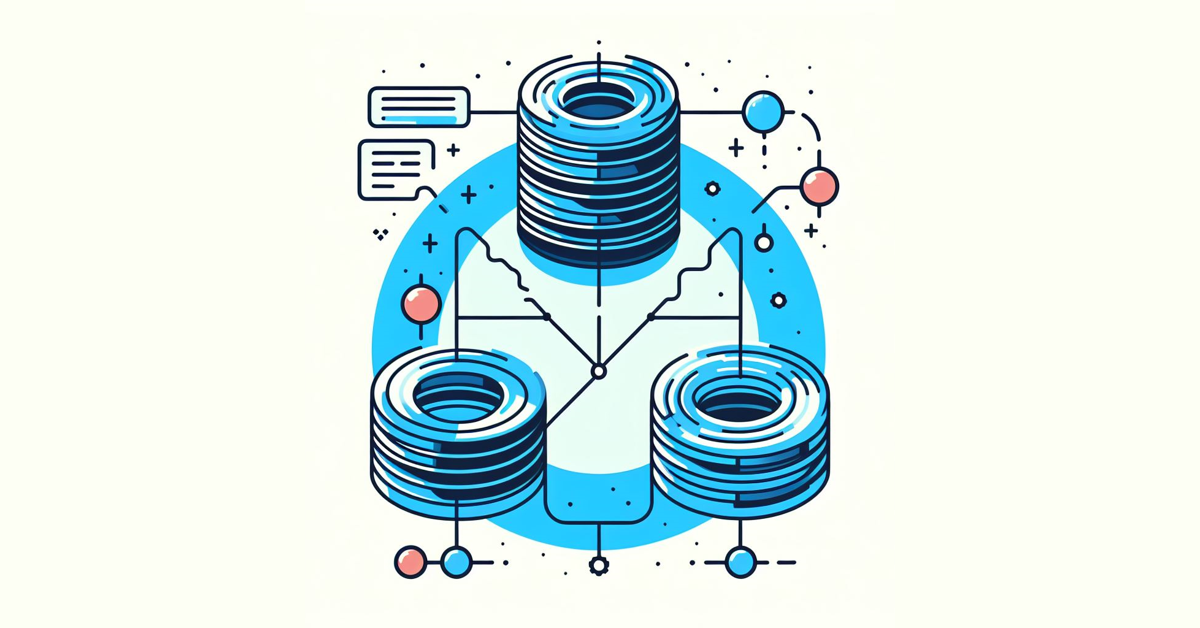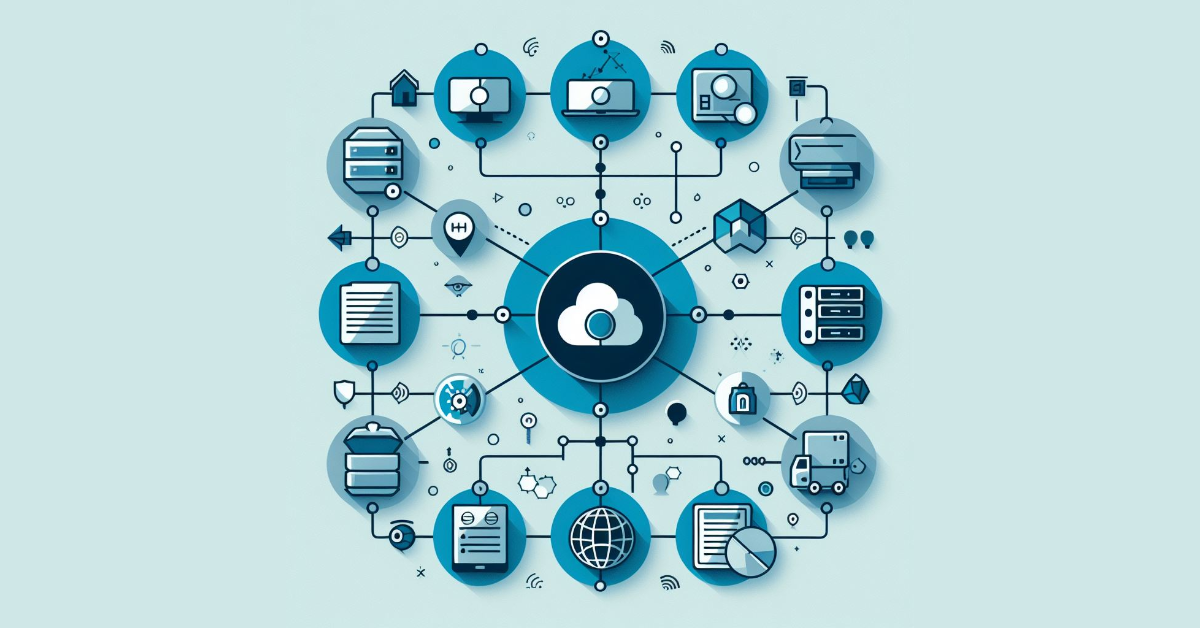Event-Driven Architecture (EDA), a paradigm that revolutionises how software components communicate and react in real-time. Unlike traditional approaches, EDA enables instant responses to events, fostering agility and efficiency in software development. In this article, we’ll delve into the essence of EDA — its principles, benefits, and real-world applications — unveiling its transformative potential in shaping the future of software engineering.
🤡😢
What do you call a self-aware AI?
An existential crisis waiting to happen.
Understanding Event-Driven Architecture
What is Event-Driven Architecture (EDA) and its Core Principles
Event-Driven Architecture (EDA) is like a system that keeps an eye on events happening within or outside itself and reacts accordingly, without needing to be asked. It’s based on a few main ideas:
- Events: These are the things that happen, like a user clicking a button, a sensor detecting motion, or a new order being placed. Each event carries information about what happened.
- Event Producers: These are the sources that create events. It could be anything from a user interface to a piece of equipment sending data.
- Event Consumers: These are the parts of the system that react to events. They’re interested in specific types of events and do something when they occur.
- Event Brokers: They’re like messengers that help events get from producers to consumers. They make sure events are delivered reliably and efficiently.
How EDA Differs from Traditional Architectures and Why It’s Popular
Event-Driven Architecture is different from the usual way systems work in a few important ways:
- Real-Time Response: Instead of waiting for someone to ask for information, EDA systems react instantly to events as they happen, making interactions faster.
- Flexibility and Growth: Unlike older systems, EDA allows different parts of a system to work independently. This means it’s easier to handle more work and adapt to changes without breaking everything.
- Easier Integration: EDA makes it simpler to connect different systems together because they all speak the same event language. It’s like having a universal translator for computers.
- Stronger and More Reliable: By not relying on everything happening in a strict order, EDA systems can keep going even if one part breaks down. This makes them more dependable and able to handle unexpected situations.
With technology advancing and businesses needing to be more responsive and adaptable, Event-Driven Architecture is becoming increasingly popular. It helps companies build systems that can keep up with the fast pace of modern life and stay ahead of the competition.
The Benefits of Event-Driven Architecture
Scalability and Resilience
EDA helps systems grow smoothly and handle failures better by spreading tasks across many parts. This means the system can handle more work without slowing down, and if one part breaks, the rest can keep going.
Loose Coupling
EDA keeps different parts of a system independent, so changes in one part don’t cause problems in others. This makes it easier to update or expand the system without disrupting everything.
Real-Time Processing
With EDA, systems can react instantly to events as they happen. This is crucial for things like financial transactions or tracking data in real-time.
Seamless Integration with Microservices
EDA works well with microservices, which are small, independent parts of a larger application. Events help microservices talk to each other without getting tangled up in dependencies, making the whole system more flexible and easier to manage.
Event-Driven Architecture makes systems more flexible, responsive, and easier to maintain, which is essential for keeping up with today’s fast-paced digital world.
Real-World Applications of Event-Driven Architecture
Smart Home Systems (IoT)
Your smart home devices instantly react to events like motion detection or temperature changes, sending you immediate notifications or automating actions like adjusting the thermostat.
Online Shopping (E-commerce)
When you place an order, Event-Driven Architecture ensures quick responses by triggering automated workflows for order processing, inventory updates, and shipping logistics.
Healthcare
Patient vital signs are continuously monitored. If there’s an issue like an abnormal heart rate, instant alerts are sent to healthcare providers for swift intervention.
Financial Services
In online banking, if there’s a suspicious transaction, Event-Driven Architecture triggers alerts for fraud detection, allowing immediate investigation.
Telecommunications
Telecommunication companies use EDA to keep networks running smoothly. If there’s a network issue, automated responses kick in to maintain service reliability.
These real-world examples show how Event-Driven Architecture improves our lives by making devices and systems respond faster to events, creating a more efficient and reliable experience.
Implementing Event-Driven Architecture
Event Sourcing
- Event sourcing means storing every change to application state as an event.
- Events are like breadcrumbs that can be used to reconstruct past states.
- This helps with auditing, scaling, and ensuring data consistency.
Event-Driven Microservices
- Event-driven microservices break down applications into smaller, independent services.
- Each service reacts to events from others, promoting loose coupling.
- It’s like having small, specialised teams that communicate by passing notes.
Event-Driven Design Patterns
- These are reusable solutions for common problems in event-driven systems.
- They help ensure event consistency, reliable messaging, and error handling.
- Think of them as blueprints for building robust event-driven systems.
Best Practices
Start with Domain-Driven Design (DDD)
- Understand your business domain and define clear models and events.
- It’s like creating a map before starting a journey to guide your way.
Use Idempotent Operations
- Make sure operations can be repeated without causing problems.
- It’s like pressing an elevator button multiple times – it won’t go any faster, but it won’t break either.
Implement Asynchronous Communication
- Allow services to communicate without waiting for immediate responses.
- It’s like sending emails instead of making phone calls – you can keep working while waiting for replies.
Monitor and Analyse Event Streams
- Keep an eye on how events flow through your system.
- It’s like checking traffic on a map to avoid congestion and find faster routes.
Ensure Data Consistency and Resilience
- Aim for consistent data within parts of your system and plan for failures.
- It’s like making sure all pieces of a puzzle fit together and having spare pieces just in case.
Challenges and Solutions in Event-Driven Architecture
Event Consistency
- Challenge: Keeping events in order across multiple systems is tough.
- Solution:
- Use event versioning and schema evolution.
- Apply idempotent processing to handle duplicates.
- Explore distributed transaction patterns like sagas.
Event-Driven Testing
- Challenge: Traditional tests don’t fit well with asynchronous events.
- Solution:
- Use contract testing for interactions.
- Conduct end-to-end testing with realistic scenarios.
- Rely on specialised tools for event-driven testing.
Operational Monitoring
- Challenge: Monitoring is tricky due to the distributed and asynchronous nature.
- Solution:
- Add metrics and logging to producers and consumers.
- Implement distributed tracing for event flow insights.
- Choose monitoring tools like Prometheus or Elastic Stack.
Data Consistency
- Challenge: Achieving consistency in event-driven systems is complex.
- Solution:
- Pick the right consistency model based on needs.
- Use compensating transactions for eventual consistency.
- Employ event sourcing and integration patterns for a consistent view.
Scalability and Performance
- Challenge: Scaling with a growing event load can be tough.
- Solution:
- Design for scalability with event stream partitioning.
- Use asynchronous processing for high throughput.
- Optimise with caching to improve overall performance.
By tackling these challenges with practical solutions, organisations can embrace Event-Driven Architecture for scalable, resilient, and efficient systems.
The Future of Event-Driven Architecture
Serverless Integration
- Event-Driven Architecture (EDA) will team up with serverless computing for better scalability and cost-effectiveness.
- Expect smoother, automatic scaling and resource management based on event triggers.
- In the future, serverless platforms might get even more event-savvy, making event-driven workflows easier to handle.
Streaming Platforms Advancement
- Streaming platforms like Apache Kafka are the backbone of EDA, ensuring smooth event processing.
- Future upgrades could focus on faster performance, stronger fault tolerance, and easier management.
- Look out for AI-powered analytics for real-time insights from streaming data.
Event-Driven Analytics
- Event-Driven Analytics (EDA) is becoming crucial for extracting actionable insights from event streams.
- Expect specialised analytics tools and frameworks for event data processing and analysis.
- Techniques like complex event processing (CEP) will be key for real-time analytics.
Standardisation and Interoperability
- As EDA grows, standardisation becomes vital for seamless integration.
- Common protocols and formats will simplify development and integration.
- This will encourage collaboration between different systems.
Security and Governance
- Security and governance will be top priorities for managing event data.
- Expect robust security frameworks for data privacy and access control.
- Governance standards will ensure proper management and auditing of event data.
The future of Event-Driven Architecture is bright, with advancements like tighter integration with serverless computing, improved streaming platforms, and enhanced analytics. Expect easier development, smoother integration, and stronger security as EDA continues to evolve.



